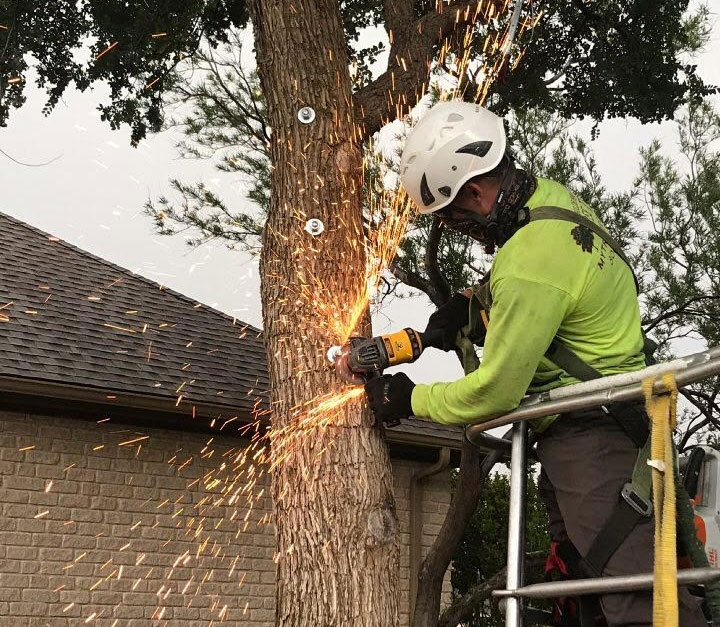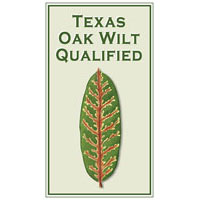Strong winds can damage your trees, especially in Lubbock, where the wind is strong and unrelenting. Consider tree cabling and bracing to protect your trees from wind damage. Cabling and bracing are two of the most effective means of protecting trees from wind damage. This article will explain why they’re essential and how they can help protect your trees from wind damage.
What is Tree Cabling and Bracing?
Tree cabling and bracing are preventative techniques to stabilize and support weakened or damaged trees. It reduces movement and stress caused by natural events such as wind, snow, or heavy rain. Cables limit the movement of branches and trunks, while bracing is used to unite split trunks or limbs.
Cabling
Static tree cabling involves attaching extra high strength steel cables between branches or trunks to limit their movement and prevent them from becoming damaged or more damaged. Generally static cabling is used when a structural defect or damage is already present in the tree.
Dynamic tree cabling involves using a rope like material specifically manufactured for tree cabling to support multiple trunks or weak branch attachments. This type of cabling allows more natural movement of the tree during weather events while still limiting extremes. Dynamic cabling is a less invasive option.
Bracing
Tree bracing involves using steel bolts (all thread), and other hardware to secure the tree’s structure and reduce unnecessary movement of the damaged trunk or limb. Bracing is typically recommended when there is some type of obvious defect or existing failure.
Why Tree Cabling and Bracing is Necessary
As trees grow, their branches become heavier and more prone to falling due to gravity, wind, snow, and ice buildup. Tree cabling & bracing helps reduce additional stress on the trunk, which can cause it to snap or bend over time. In addition, any branches that are weak or diseased may break off unexpectedly, resulting in dangerous situations and costly property damage.
Benefits of Tree Cabling and Bracing
Tree cabling and bracing are two beneficial methods of protecting trees from the extreme winds we experience in West Texas. Cabling and bracing support weak or aging trees to help keep them structurally sound, reducing potential damage to property or injury to people.
Both methods have numerous benefits, including the following:
- Cabling and bracing can help prevent limbs and trees from falling onto buildings, cars, and other property, thus reducing the damage caused by storms.
- Cabling and bracing can help prolong the life of a tree by providing additional support for weak limbs and trunks, allowing the tree to withstand the harsh conditions of West Texas better.
These methods can effectively protect your trees from the high winds of West Texas and ensure they remain safe for years to come.
Signs You Need Tree Cabling and Bracing
If you’ve noticed that your trees are showing signs of instability, it may be time to consider tree cabling and bracing. Some tell-tale signs can indicate when a tree needs cabling and bracing.
- Splitting tree limbs and branches
- Heavy or overextended limbs
- V-union or codominant stems. Codominant stems are two main stems that grow from the same trunk. These items are often weakly attached and can easily split or break. Conversely, a V-union is a “V” shaped union between two branches that does not provide enough space for proper attachment. These forms of defects can weaken the tree’s structural integrity and cause it to become unstable.
Wind Defense for Your Trees in West Texas
Contact us to invest in your tree’s health and help it withstand the weather in West Texas! At Hildebrandt Tree Tech, our ISA-Certified Arborists are happy to answer all your questions regarding tree cabling. We will evaluate your tree’s condition and recommend which cable option works best for your situation. Our experienced technicians will install the cables, so your trees are safe and secure.






